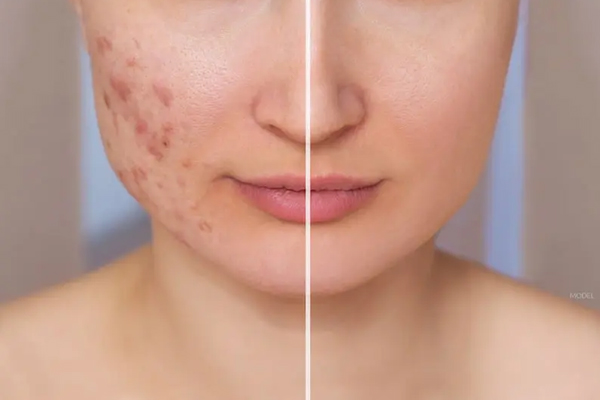Acne scar treatment
Acne scars can be a persistent concern for many individuals, affecting their skin’s texture and overall appearance. Thankfully, there are various treatments available to reduce or eliminate the appearance of acne scars, helping to restore smoother, clearer skin.
Types of Acne Scar Treatments
-
Laser Treatments
- Fractional Laser Resurfacing: Targets specific areas of skin to reduce scars while promoting collagen production.
- Erbium YAG Laser: Penetrates deeper into the skin to treat severe scars.
-
Chemical Peels
- Removes damaged skin layers to promote new skin growth, reducing scar visibility.
- Options include glycolic acid, TCA (trichloroacetic acid), and phenol peels.
-
Microneedling
- Involves tiny needles that create controlled micro-injuries to stimulate collagen production and improve scar texture.
-
Subcision
- Used for deep scars by breaking up the scar tissue and promoting healing through collagen stimulation.
-
Dermal Fillers
- Fillers like hyaluronic acid are used to plump up depressed scars and create a smoother skin surface.
-
PRP Therapy (Platelet-Rich Plasma)
- Utilizes the patient’s own plasma to accelerate healing and reduce scar visibility.
Benefits of Acne Scar Treatments
- Reduces the appearance of acne scars for smoother skin texture.
- Enhances skin’s overall tone and appearance.
- Boosts confidence by improving skin clarity.
- Minimally invasive and non-invasive options are available for various scar types.
Procedure Overview
1. Laser Treatments
-
Fractional Laser Resurfacing:
- Uses a laser to create micro-damage to skin layers, promoting the growth of fresh skin cells and collagen.
- Ideal for shallow to moderate scars.
-
Erbium YAG Laser:
- Treats deeper scars with more precision, reducing scarring and promoting skin renewal.
2. Chemical Peels
-
Glycolic Acid Peel:
- Removes the top layer of skin to reveal fresher skin beneath, effective for mild scars.
-
TCA Peel:
- Suitable for moderate to deep scars, offering significant improvement in skin texture.
3. Microneedling
- Involves tiny needles to create controlled micro-injuries, stimulating collagen production and improving scar depth.
4. Subcision
- Breaks up scar tissue, allowing for smoother skin. Best for deep scars.
5. Dermal Fillers
- Fills in depressed scars to create a more even skin surface. Results are temporary and may require maintenance sessions.
6. PRP Therapy
- Utilizes plasma with growth factors to speed up healing and reduce scarring, improving skin texture over time.
Recovery Process
-
Laser Treatments:
- Mild to moderate discomfort during the procedure.
- Redness, swelling, and peeling for 5-10 days post-treatment.
- Gradual improvement over several sessions.
-
Chemical Peels:
- Mild discomfort with peeling and flaking skin for 5-7 days.
- Full results seen after 2-3 weeks.
-
Microneedling:
- Mild redness and minor discomfort post-treatment.
- Full recovery within 1-2 days, with visible improvement in scar texture.
-
Subcision:
- Recovery period of 1-2 weeks with minimal discomfort.
- Results continue improving as healing progresses.
Ideal Candidates for Acne Scar Treatment
- Individuals with mild to severe acne scars.
- Those seeking to improve skin texture and reduce scar visibility.
- Healthy individuals with realistic expectations for scar improvement.
Risks and Complications
-
Laser Treatments:
- Temporary redness, swelling, and mild discomfort.
- Rare risks include hyperpigmentation or scarring.
-
Chemical Peels:
- Skin irritation, redness, and peeling.
- Risk of infection or pigmentation changes in some cases.
-
Microneedling:
- Minimal risk of scarring or infection.
- Temporary redness and minor skin irritation.
Cost Factors
- Severity of acne scars.
- Type of treatment (laser, microneedling, chemical peel, etc.).
- Number of sessions required.
- Location and expertise of the dermatologist or specialist.



